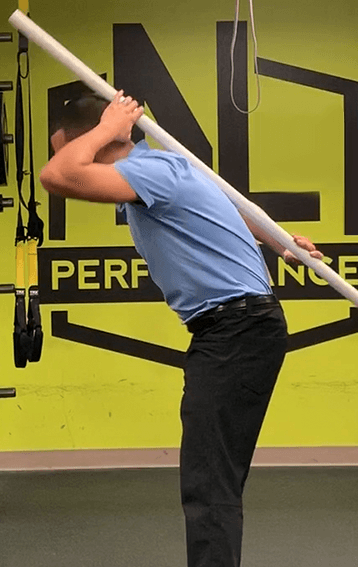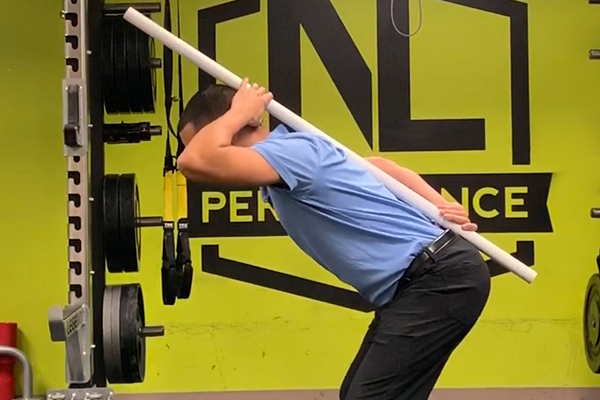This is the first part of a 4 part Spinal Hygiene Series.
The hip hinge is arguably one of the most important movement patterns in strength training. The hip acts as a hinge for the lower and upper body to thoroughly engage the posterior chain – especially glutes, hamstrings, and lower back.
Often, we use this exercise with patients experiencing acute lower back pain, especially those who have discogenic or disc related pain. This can also be something we will give you to increase performance as you access more of the bigger muscle groups here (glutes, etc) called your posterior chain vs. using your lower back for exercises like swinging a kettle bell.
In the video, Steven and Alex walk us through the mechanics of a proper hip hinge…
- Go down to 45 degrees relative to the horizon. As he bends, his back stays in contact with the dowel.
- As he moves, his spine stays in contact with the dowel maintaining. The dowel is in reference to the three main points of contact…
- 3 points of contact to maintain –
- Head
- Between shoulder blades
- tailbone

Hinging at your hips is important because it keeps the spine neutral, allowing us to load our hips and not our low back. What that may look like, is if we hinge at our back, you will see the dowel come up off of the lower end of his back. Another common fault is too much arching in the low back as you bend forward. The space can make you lose the other key points of contact.
A proper hinge takes the stress out of the low back and put it into the hips, allow your back start to heal. When you come back up, make sure that movement stays within the hips, and the back comes along for the ride.
When you’re getting started, we recommend you do this exercise in front of a mirror or with a partner to get the form down.

